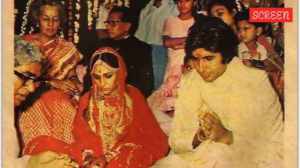Since the Union Cabinet approved the caste census exercise on April 30, political parties have been scrambling to take credit for it.
While the BJP seemingly decided to go ahead with the move to blunt the Opposition’s attacks, the Congress is now trying to reclaim it by questioning the NDA government at the Centre about the timeline, budget allocation, and other specifics. On Sunday, the Congress accused Prime Minister Narendra Modi of taking a “sudden, complete and desperate U-turn” on the issue.

Since the announcement, the Congress has also been trying to project Lok Sabha Leader of Opposition Rahul Gandhi, one of the most vocal advocates of the exercise, as the one who forced the government to agree to the demand while the BJP has targeted the Congress over its failure to publish the data collected under the Socio Economic and Caste Census for 2011 (SECC).
What was the 2011 SECC?
In June 2011, the Union Rural Development Ministry commenced the SECC through a door-to-door enumeration across the country and said it was the “first time” such a comprehensive exercise was carried out in rural and urban India.
According to the ministry, the SECC had three objectives: to rank households based on their socio-economic status to enable state governments prepare of list of families living below the poverty line, to make available authentic information that would enable caste-wise enumeration of the country’s population, and to make available information regarding the socio-economic condition and education of various sections of the population.
What was the politics behind the SECC?
About a year into its second term, in 2010, the Manmohan Singh-led UPA government was caught off guard after its ally Rashtriya Janata Dal (RJD), the Samajwadi Party (SP,) and the Janata Dal (United) demanded that a caste census be held with the 2011 Census.
Though many of its OBC leaders supported the idea, the Congress and the BJP, then the main Opposition party, lacked a clear position on the issue. The Union Ministry of Home Affairs (MHA), then under P Chidambaram, argued that including caste as a question during the Census would yield inaccurate results due to “logistical issues”.
Story continues below this ad
Despite the Centre’s reluctance, the socialist parties in the Hindi heartland, one of whose main voter bases was the OBC vote, continued to press for a caste census, forcing the government to agree to a debate in Parliament despite a few ministers remaining opposed to the move.
The BJP, which was seeking to expand its support base, veered around to support the move.
On May 6 and 7, 2010, a discussion was held in Parliament on the issue. While it brought to light the divisions within the Congress, a majority of the leaders who spoke, including those from the BJP, favoured a caste census.
Following the discussion, the then government referred the matter to a Group of Ministers headed by the then Union Finance Minister, Pranab Mukherjee. The decision to undertake the caste census was taken in September 2010.
Story continues below this ad
How was the exercise undertaken?
Amid differences in the Congress over the issue, the government decided not to hold the caste enumeration exercise along with the decadal Census, which was held in February 2011. The SECC 2011 was undertaken that June, with the Union Rural Development Ministry as the nodal ministry, and involved the participation of the Union Housing and Urban Poverty Alleviation, the office of the Registrar General and Census Commissioner and state governments.
As part of a multi-step process, District Collectors or Magistrates were tasked with formulating a district/town plan and a communication plan. Enumeration blocks (EBs), each consisting of roughly 125 households, were used for the exercise. The government trained the enumerators and provided them with copies of the layout maps and the abridged house list, prepared during the 2011 Census.
Each numerator was assigned to four EBs, while every six enumerators were assigned to one supervisor. The enumerators were directed to visit each household identified in the EB and canvas with the questionnaire. They were also told to reach out to homeless people.
The data, collected through a tablet, was verified by the panchayat, following which a draft publication list was prepared. In rural areas, the draft list was read out at the gram sabha within a week of its publication to enable people to file objections and challenges before the officials concerned.
Story continues below this ad
The information included details such as occupation, education, disability, religion, SC/ST Status, name of caste/tribe and other economic parameters.
What happened to the SECC data?
Though the provisional data was ready by September-October 2023, the UPA government took a call to let the next government release the data as the Lok Sabha polls were on the horizon.
The UPA lost the 2014 polls and the Narendra Modi-led NDA government that came to power only released the data from rural areas in July 2015 while holding back caste data, claiming it had not been finalised yet.
A year later, the Modi government told the Lok Sabha in a written reply that it had “directed the Office of the Registrar General and Census Commissioner to process the caste data and hand over the details of the castes/tribes returned in the enumeration to the proposed Expert Group to be constituted by the Ministry of Social Justice and Empowerment and the Ministry of Tribal Affairs to classify these caste/tribe returns”.
Story continues below this ad
In March 2018, the Centre told the Lok Sabha that “certain errors had been observed during the processing of the caste data”. That August, the government told the Rajya Sabha that the processing of caste data was delayed due to “certain design issues at the data collection stage”.
Into its second term, the Modi government, in September 2021, cited “technical flaws” in data collection to claim the data was “not reliable”. Claiming that the exercise had thrown up 46 lakh different castes, it said “the total numbers cannot be exponentially high to this extent, and that the caste enumeration … was fraught with mistakes and inaccuracies”.
What are Congress and BJP’s current positions on SECC?
Admitting there may have been some issues in the 2011 SECC, the Congress has accused the Modi government of “not being serious on the issue”. It has asked why the NDA government did not “clean it up and publish the data by the end of 2014”.
The BJP claims the SECC was a “failed attempt” of the Congress and the next caste census will be different as it will “resolve the issues that the 2011 exercise had”.

































